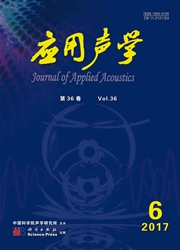

 中文摘要:
中文摘要:
在水的答案的 acephate 的降级被调查与超声并且两个的 ozonation 方法,以及联合。一台试验性的设备被设计,象超声的力量,温度,和煤气的流动那样的操作参数评价严格地在经常的层次被控制。超声的波浪的频率是 160kHz。紫外可见(紫外力) 分光镜并且拉曼分光镜的技术在实验被使用。紫外力的分光镜的结果证明 ultrasonication 和 ozonation 在联合系统有 synergistic 效果。在解决方案以后的从 60.6% ~ 87.6% 的 acephate 增加的降级效率被 160kHz 照耀为在 ozonation 的 60min 的超声的波浪进程,和它比和与联合方法是更高的分开超声并且 ozonation 方法。拉曼系列研究证明经由联合 ultrasonic/ozonation 方法的那降级比光催化更彻底。氮原子的 oxidability 在超声的波浪下面被支持。无机的离子和降级小径的变化在这研究在降级过程期间被调查。大多数最后的产品对环境无害。
 英文摘要:
英文摘要:
The degradation of acephate in aqueous solutions was investigated with the ultrasonic and ozonation methods, as well as a combination of both. An experimental facility was designed and operation parameters such as the ultrasonic power, temperature, and gas flow rate were strictly controlled at constant levels. The frequency of the ultrasonic wave was 160 kHz. The ultraviolet-visible (UV-Vis) spectroscopic and Raman spectroscopic techniques were used in the experiment. The UV-Vis spectroscopic results show that ultrasonication and ozonation have a syn- ergistic effect in the combined system. The degradation efficiency of acephate increases from 60.6% to 87.6% after the solution is irradiated by a 160 kHz ultrasonic wave for 60 min in the ozonation process, and it is higher with the combined method than the sum of the separated ultrasonic and ozonation methods. Raman spectra studies show that degradation via the combined ultrasonic/ozonation method is more thorough than photocatalysis. The oxidability of nitrogen atoms is promoted under ultrasonic waves. Changes of the inorganic ions and degradation pathway during the degradation process were investigated in this study. Most final products are innocuous to the environment.
 同期刊论文项目
同期刊论文项目
 同项目期刊论文
同项目期刊论文
 期刊信息
期刊信息
